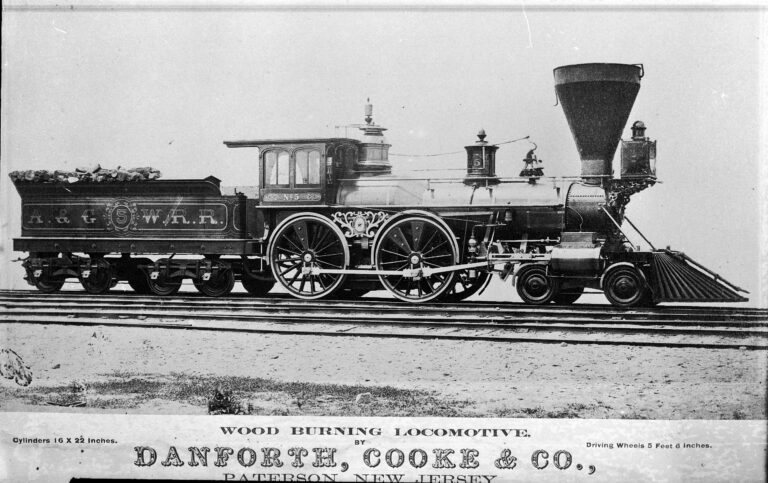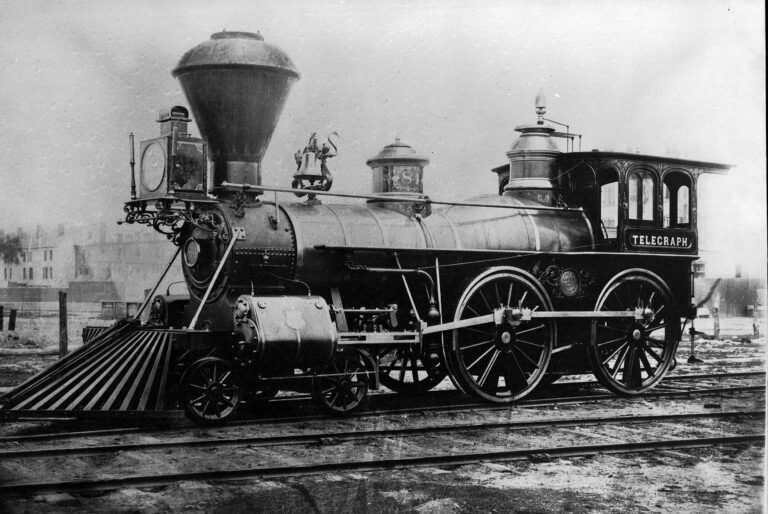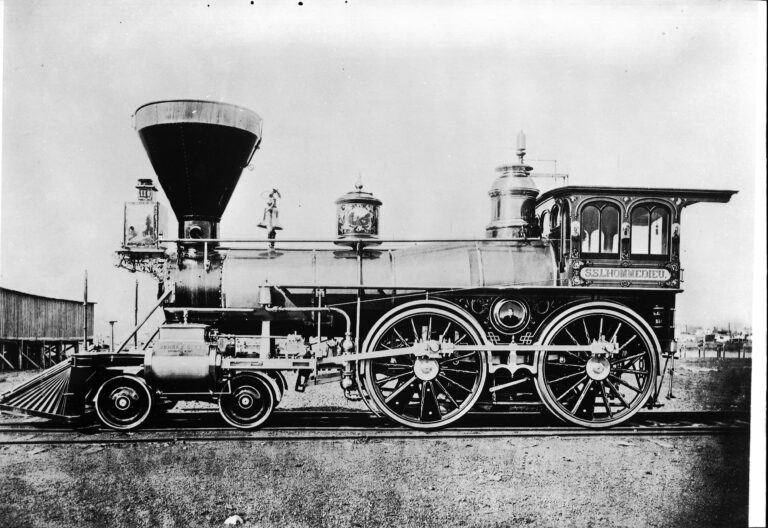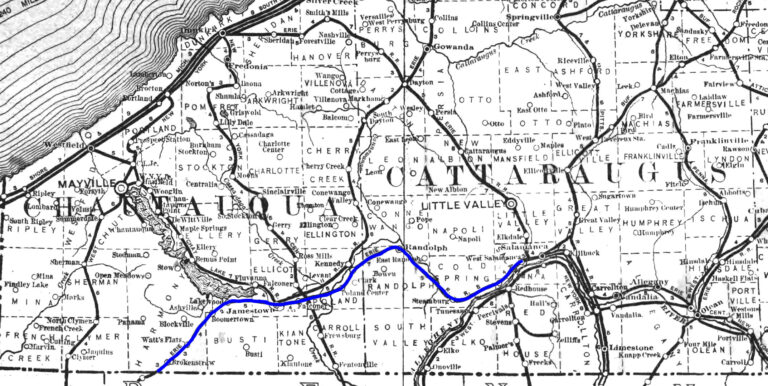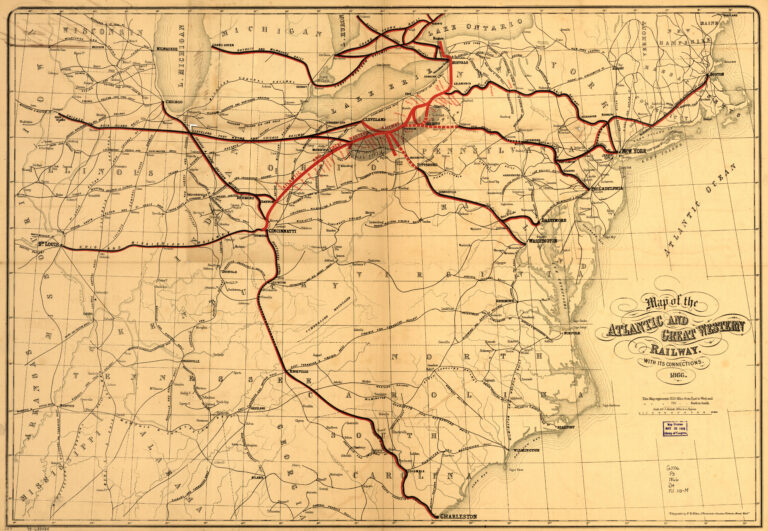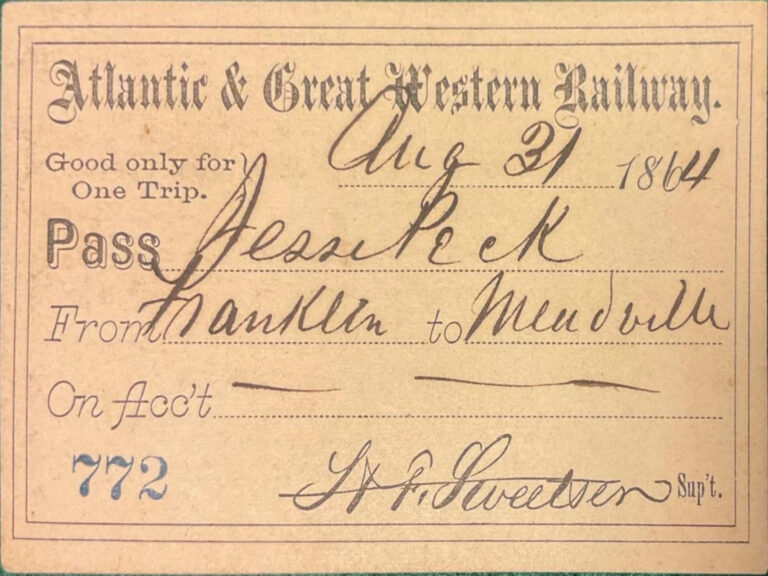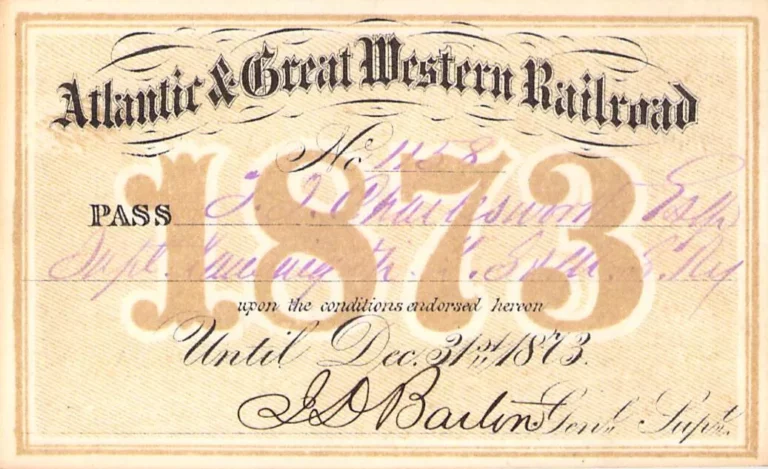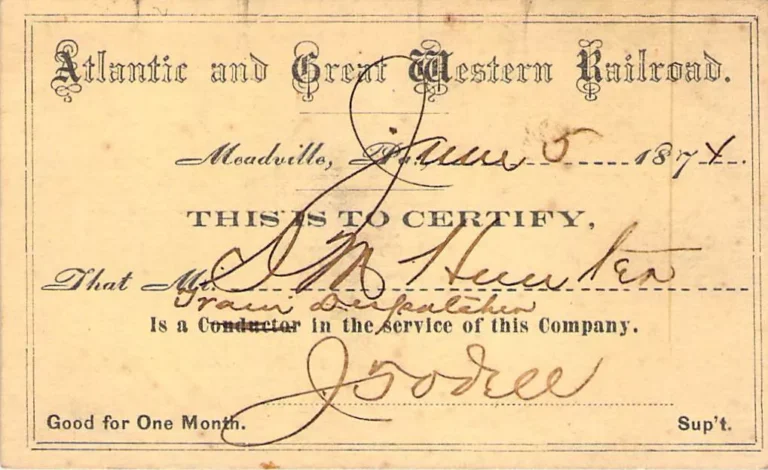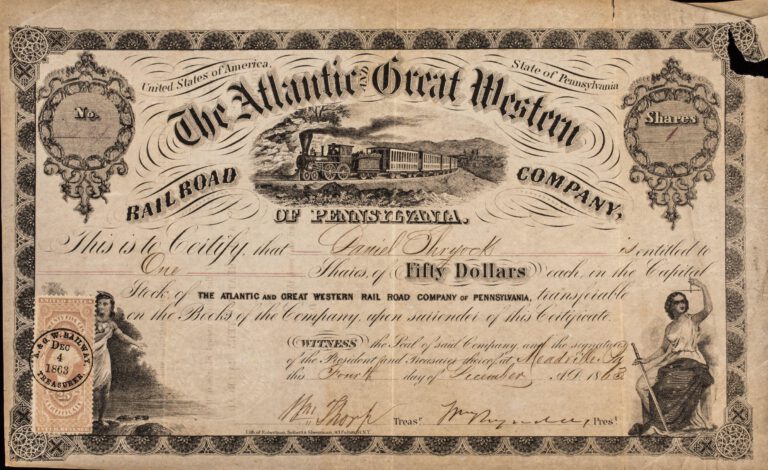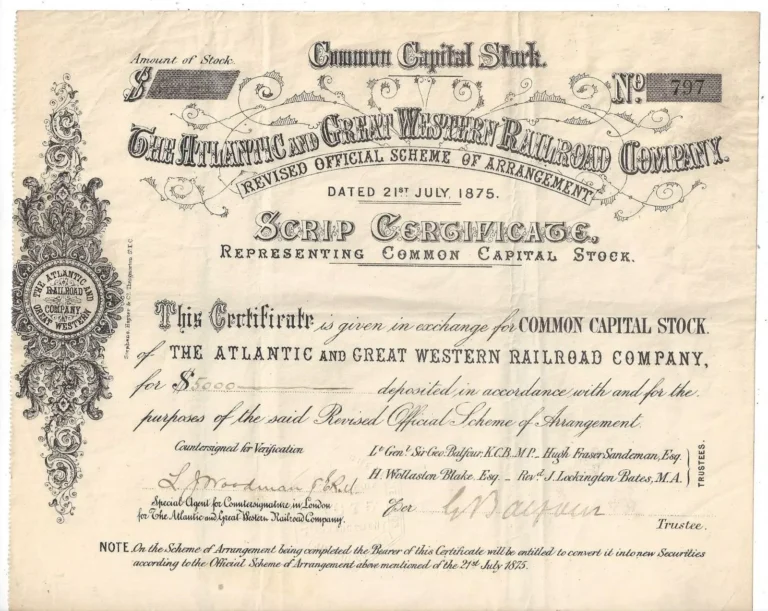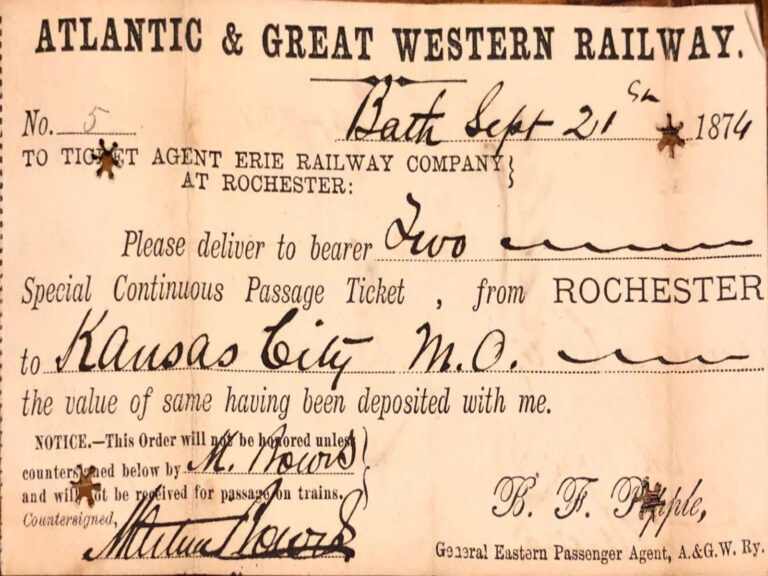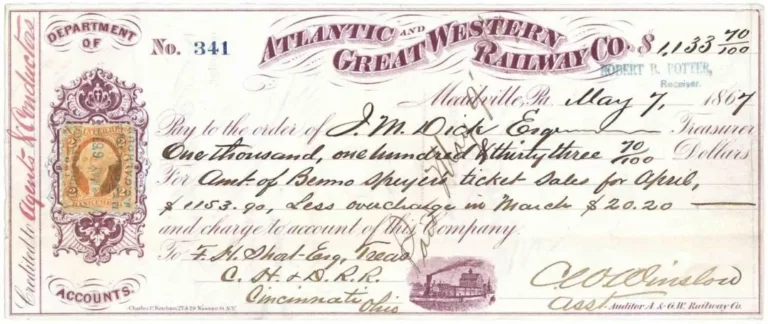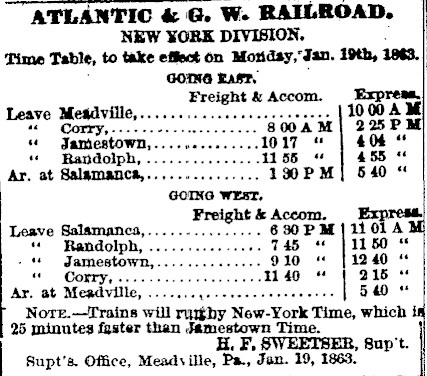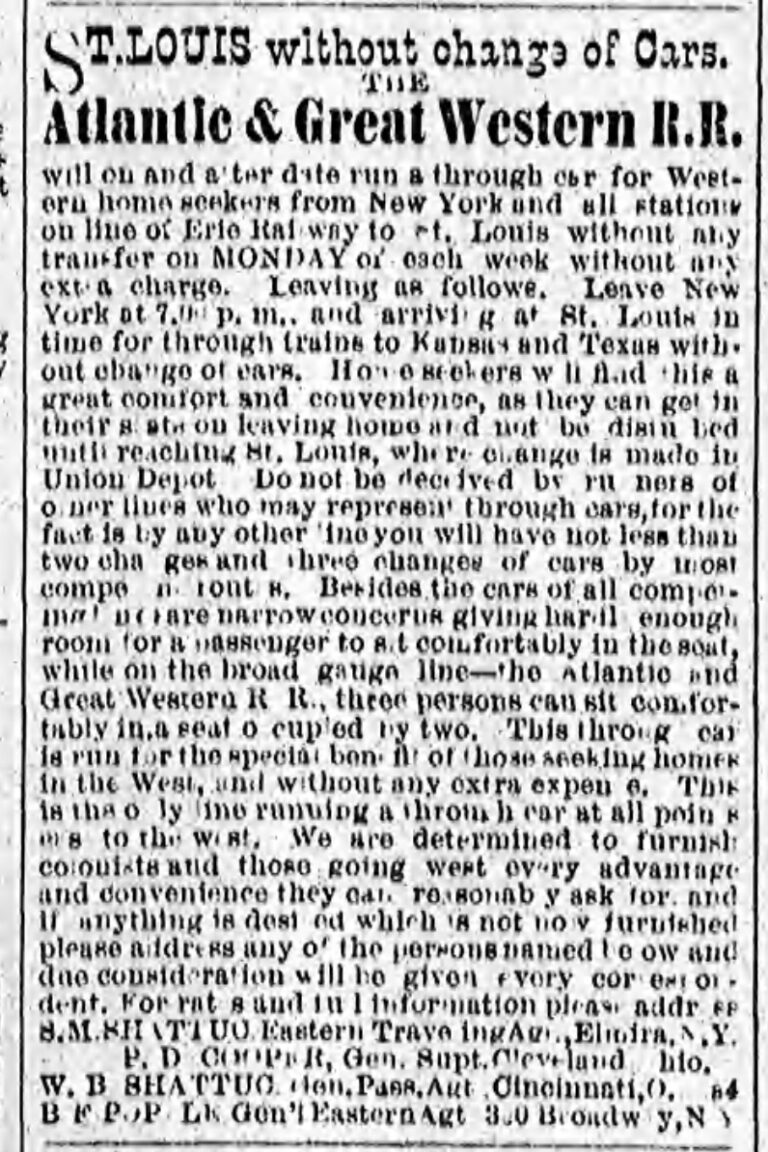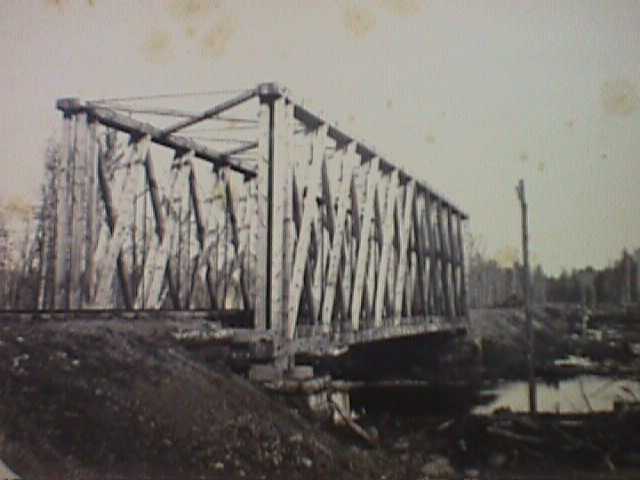
History
The Atlantic and Great Western Railroad began as three separate railroads centered in Jamestown, NY, Meadville, PA, and Franklin Mills, OH. These roads were the Erie and New York City Railroad, the Meadville Railroad, and the Franklin and Warren Railroad, respectively. The owners of the three railroads had been working closely together since an October 8, 1852 meeting in Cleveland to plan an expansion of the “Great Broad Route” through their respective areas. On March 12, 1862, general control of all three companies was placed under a central board made of two directors from each of the companies. The Ohio Board was represented by Marvin Kent and W. S. Streator; the Pennsylvania Board by William Reynolds and John Dick; and the New York Board by A. F. Allen and T. W. Kennard. William Reynolds was elected President of the Board. The line reached Cleveland on November 18, 1863 and was connected to the Cincinnati, Hamilton and Dayton Railroad in Dayton on June 20, 1864; thus linking St Louis with New York via a six-foot gauge line.
On August 19, 1865 an agreement was drafted to merge the three separate companies into the Atlantic and Great Western Railway Company. On October 5th of that year the new company issued a $30 million mortgage to pay off the outstanding mortgages on various companies included in the merger.
The company was not financially successful and went into the hands of a receiver, Robert B. Potter of New York, on April 1, 1867. Potter operated the railroad until December 1868 when it was leased for 12 years by the Erie Railroad. Jay Gould, then president of the Erie, arranged to have the company again placed into receivership, this time with Gould and W. A. O’Doherty as the receivers. This receivership was transferred to Reuben Hitchcock of Cleveland in November 1869. In February 1870, the Erie again leased the company, pending foreclosure. The foreclosure took place and the property was purchased on July 26, 1871 by Gen. George B. McClellan, William Butler Duncan and Allen G. Thurman. A deed for the property was finalized on October 3, 1871.
In May 1874, the Atlantic and Great Western Railroad was leased again by the Erie, at terms very generous to the A&GW and it’s backer James McHenry. On December 10, 1874 the new president of the Erie, Hugh M. Jewett, repudiated the lease and the company went into the hands of a new receiver, J. H. Devereaux. This action lead to a series of lawsuits between McHenry and Jewett which brought shame to both companies. On January 10, 1880 the property was again sold at foreclosure and was reorganized as the New York, Pennsylvania and Ohio Railroad Company.
In 1864/65 the A&GW began grading the Buffalo Extension of the Atlantic and Great Western Railroad through from Randolph to Buffalo through Napoli, New Albion, and Otto as a route into Buffalo independent of A&GW connection to the Erie Railroad at Salamanca. During the winter and spring of 1864-65 considerable work was done in grading, but the work was soon abandoned. See the Newspaper Articles page for an article on this proposed line.
The Erie Railroad was not the only potential eastern connection for the A&GW. This 1871 letter from Sobieski Ross to General George B. McClellan proposes connecting the A&GW with the “Pine Creek Route”.
See the Atlantic and Great Western Railroad timeline for more information.
Stations
Salamanca * Bucktooth * Red House * Cold Spring * Steamburg * Randolph * Waterboro * Kennedy * Poland * Levant* Jamestown * Ashville * Watt’s Flats * Panama/Grant
It was not unusual for railroads to build or shut down stations as needed, especially in the early days of a line. Cold Spring, Poland, Levant, and Watt’s Flats appears in an 1866 list of A&GW stations but are not included in an 1875 report on the line. Bucktooth appears in the 1875 report but not in a 1887 timetable showing the same route.
Digital Artifacts
Click on the links below to see various digital artifacts related to the railroad, including photos, maps, timetables, advertisements, and equipment rosters.
Locomotives
Maps
Tickets, Passes, Stocks, and Bonds
Timetables
- An undated A&GW timetable at the University of Nebraska at Lincoln.
Other Interesting Things
Learn More
Listed below are some other good sources of information about the railroad.
- Wikipedia. “Atlantic and Great Western Railroad“
- https://www.trumbullcountyhistory.com/atlantic-great-western-railroad/
- Instructions for Running of Trains, &c., on the Atlantic & Great Western Railway – An 1863 manual of rules and regulations published by the railroad.
- Over the Atlantic and Great Western Railway – An 1866 report by Patrick Berry to British investors of his travels over the railroad.
- Atlantic & Great Western Railway. Letter to general members of the Committee for Mutual Protection – An 1867 letter to British investors about the state of the railroad.
- “An Inventory of the Property and Effects…of the Atlantic and Great Western Railways” – An 1870 report by Reuben Hitchcock, receiver for the railroad, describing all the assets of the company.
- “Report of the Condition of the Atlantic & Great Western Railroad, Its Branches and Leased Lines” – An 1875 report by the receiver of the railroad inventorying all the assets of the company. This is a tremendous resource with great details.
Cover Photo: By the author.
